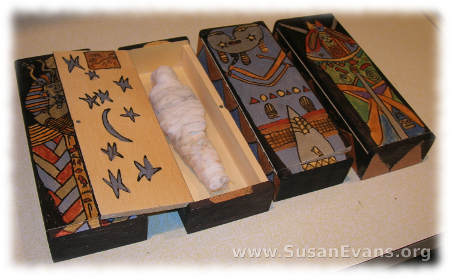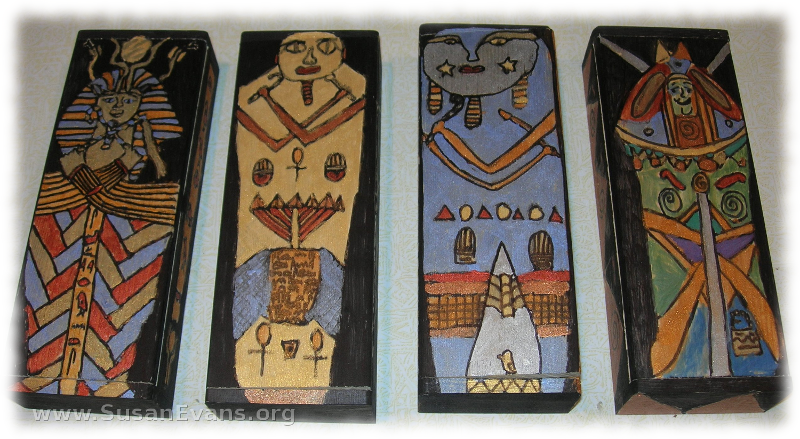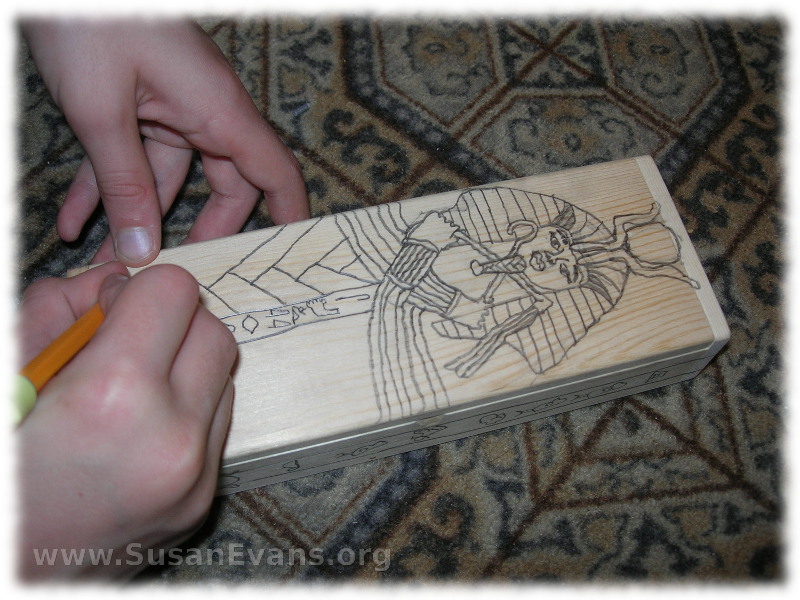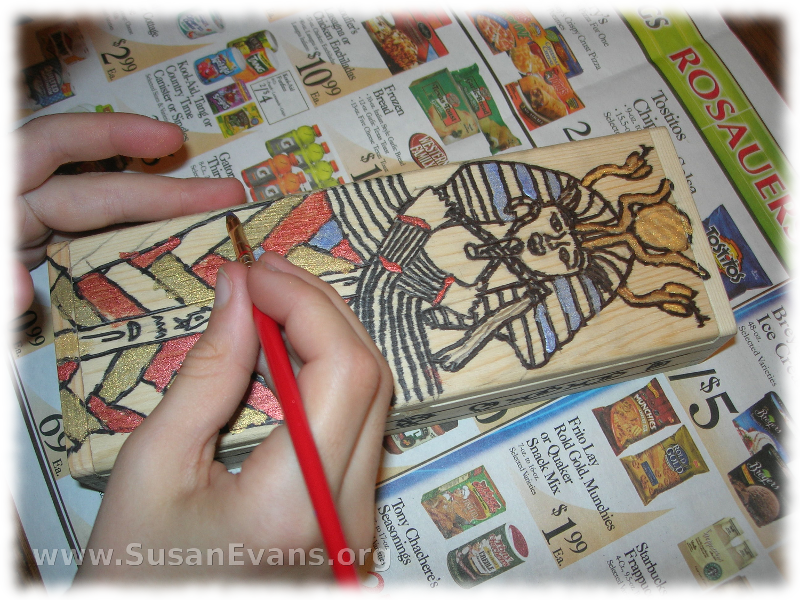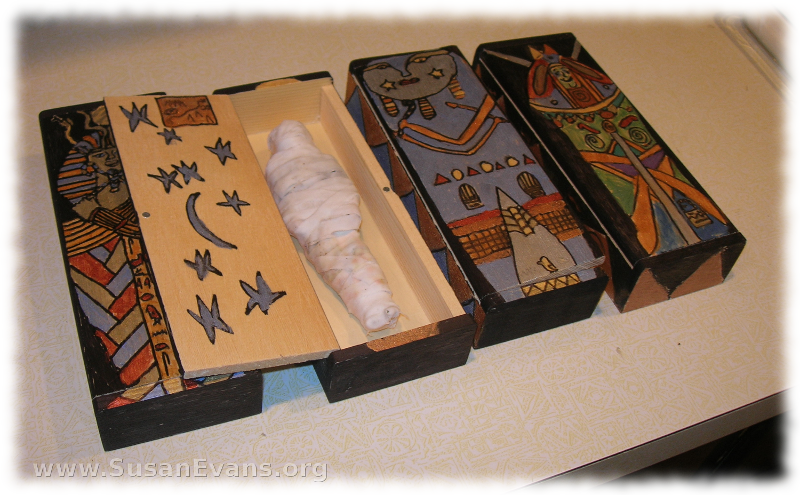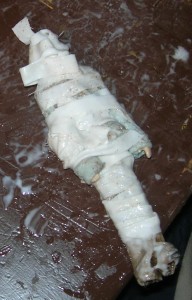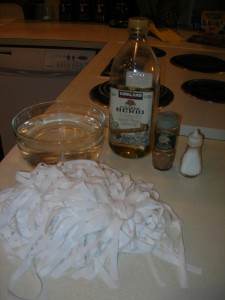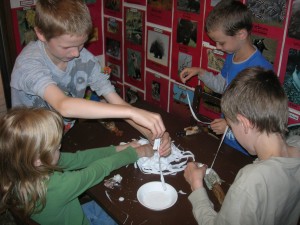This post may contain affiliate links.
The Ten Commandments
We’ve watched several programs and videos about Egypt during the last month. By far, our favorite was “The Ten Commandments”, with Charleton Heston in it. It is 3 and a half hours long, so we watched it half an hour a day, until one of my sons begged to finish it one Sunday afternoon (because he said he loved it). Even though the set of two videos isn’t perfectly Scriptural, it does help you to picture and to feel what it was like for the Israelites to leave Egypt. The movie was filmed in Egypt.
The Exodus Revealed
Our second-to-favorite video was “The Exodus Revealed.” It’s a Christian video that showed evidence of Egyptian chariot wheels in the middle of the Red Sea (which was super cool!), but at a different place than what is commonly believed. There was other evidence of the Exodus story, too, like a rock that was split, with evidence of water there, even though it is physically impossible.
Egypt Eternal
The National Geographic video “Egypt Eternal: The Quest for the Lost Tombs” was boring. It contained a lot of good information, but they need to hire a better writer to make it more exciting. There was female nudity on one sarcophagus, and a sacred cow made the archaeologists excited. My oldest son said, “Why are they excited to find an idol? God isn’t pleased by that. Besides, isn’t that the same image that the Israelites made at the bottom of Mt. Sinai?” Yes, it was the one that infuriated Moses so much that he broke the Ten Commandments, and God nearly destroyed the whole nation. I told my son that the reason the archaeologists were excited about the golden idol was because it was a historic piece of antiquity that is worth a lot of money and has historic significance that can help us understand history. “Is that the way God feels about it?” my son said. “Probably not,” was my answer.
The Lost Mummy of Imhotep (thumbs down)
“The Lost Mummy of Imhotep” was not very good. It vilified Christians by saying that they destroyed a lot of ancient Egyptian artifacts and killed priests. Of course, this was back during the time when entire nations were “converted” to Christianity in name only. Regardless, there was nudity on the tomb walls, and people removed organs from the body (in a re-enactment) for the preparation for making a mummy. The blood and guts was behind the person lying down, so an adult can see that nothing is happening. This one isn’t worth watching, in my opinion, because they never even found the mummy. They were just looking. Ho-hum.
King Tut’s Mystery Tomb Opened
“King Tut’s Mystery Tomb Opened” was outstanding. Archaeologists found a new tomb from the time of King Tut. They had only a short amount of time to open the sarcophagus, because the mummy could disintegrate to dust within minutes. A hole in the coffin was already there, so they needed to open it, because it had already been exposed to air. Once a tomb is opened, there are changes in humidity, temperature, insects and other factors to deal with. Eventually they opened the sarcophagus (recorded live!) to find not a mummy, but lots of treasure! We were all on the edge of our seats the entire time. It was fun.
Secrets of Egypt’s Lost Queen
“Secrets of Egypt’s Lost Queen” was my personal favorite of all the Discovery Channel programs. This was a two-hour show, and it was an absolutely riveting, edge-of-your-seat mystery investigation. We were trying to figure out which of four mummies was Queen Hatchepsut. We knew that royalty was buried in high-quality linen, and that one arm was bent to signify royalty. Based on other ancestors and statues, we know that her eyes were far apart, and she had a wide nose and small mouth. A CAT scan of the mummies, followed by DNA evidence, was presented. Several mummies were ruled out. Finally, in a box labeled with Queen Hatchepsut’s name, a CAT scan revealed a tooth as well as organs of her body. The tooth had one root missing. One mummy had a tooth missing, with one root still in her head. The puzzle matched exactly for size, and the mystery was solved. My older two boys (ages ten and eight) were on the edge of their seats with excitement and often jumped up and down as we watched. I absolutely loved it. My seven-year-old son was scared of the mummies, especially the one called “The Screaming Mummy.” My five-year-old girl was fine with it. Because it was so long, we watched half an hour a day. So when my scared son saw “The Screaming Mummy” again, I sang, “La, la, la, la, la, la, la, la, la…” (as if the mummy was singing instead of screaming) so that he would laugh. He did laugh, and he’s fine now. This show is fun to watch, especially if your kids are older.

